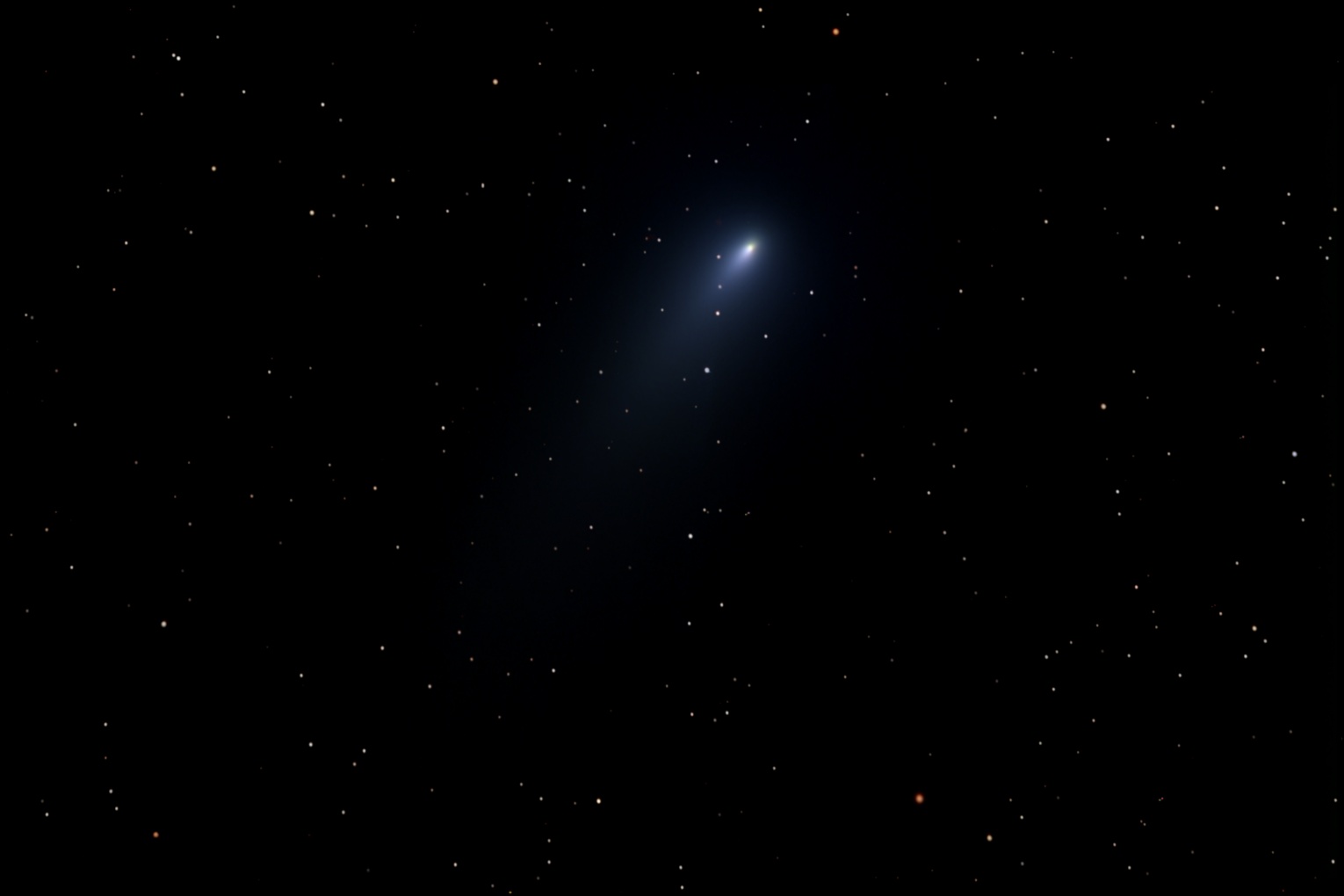
Comet 73P/Schwassmann-Wachmann 3 is a periodic comet that orbits the Sun about every 5-1/2 years. The comet had broken apart into a number of fragments at the time this image was taken. This image shows the brightest fragment of the comet. At least two fragments of Comet 73P/Schwassmann-Wachmann 3 were visible in small telescopes, while a total of 19 fragments could be detected by observatory telescopes.
Comet 73P/Schwassmann-Wachmann 3 was discovered in 1930 by Carl Arnold Schwassmann and Arno Arthur Wachmann. At the time, they were photographing the sky looking for asteriods. The comet was lost and was not observed when it was predicted to return in 1935-1936. This comet remained lost for many years after its 1930 appearance. In 1979, astronomers reported the discovery of a comet that turned out to be the lost comet 73P/Schwassmann-Wachmann 3. The comet was missed again when it returned in 1985-1986. However, it was recovered in 1990 and reached a maximum magnitude of 9. Comet 73P/Schwassmann-Wachmann 3 surprised everyone in 1995 when it underwent several outbursts and became much brighter than expected. At that time, three separate fragments were detected. When the comet returned in 2001, it was again brighter than expected, and was widely observed even though it was poorly placed for observation. During the 2006 apparition, comet 73P/Schwassmann-Wachmann 3 passed within 0.0735 AU from Earth on May 13 and reached perihelion on June 7, 2006.
This is an RGB color CCD image taken with an ST-8XE CCD and a Takahashi FCT-150 refractor. The image was taken at a dark sky location in western Arizona.
Constellation: Hercules
RA: 16h 37m 55.6s Dec: +31d 47' 30.8"
April 30, 2006 at 0725 UT
Image by Sid Leach
Scottsdale, Arizona
Recent Images.
Complete list of images.
Description of equipment used to acquire images.
Home
Feedback and comments should go to Sid